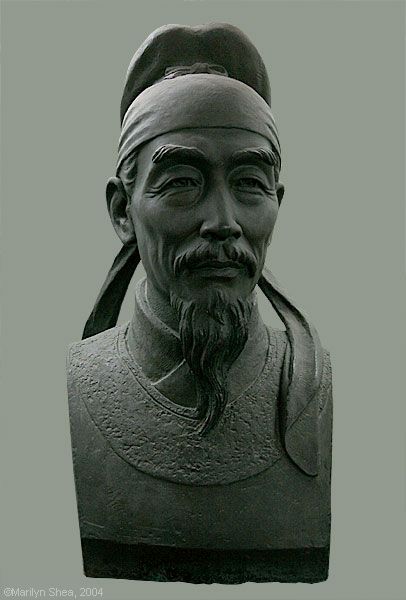 |
| Guō Shǒujìng 郭守敬 (1231-1314) lived during the Yuan Dynasty (1271 – 1368). He was an inventor as well as a mathematician and astronomer and applied his engineering skills to improve many of the instruments used to measure celestial bodies. Among these were the gnomon, square table, abridged or simplified armilla, and a water powered armillary sphere called the Ling Long Yi. Below you will find pictures of his major inventions and improvements. Further descriptions of the instruments are found later within these pages.
The Yuan Dynasty was a great time for science and scholarship. The Mongols opened China to many foreign ideas. This stimulated scientists to new levels of creativity. The Mongols were not interested in destroying China but rather supported and promoted advances in knowledge. It was only four years after the beginning of the Yuan Dynasty that Guo Shoujing designed the new observatory near Dengfeng. He and another astronomer, Wang Xun, made extensive observations for a new calendar there. About 27 major observatories were built during the Yuan Dynasty, many designed by Guo Shoujing. Guo Shoujing also used his engineering skills on other projects. He designed Kunming Lake, which later became the site of the Summer Palace on the west side of Beijing. The lake was designed both as a reservoir for the city and as part of a system of canals for transportation in the region. It is still possible to travel the canals from the Forbidden City to Kunming Lake and beyond (although tourists start at the Beijing Zoo).
Perhaps his greatest contribution was the development of the Shoushi calendar system 授时历 in 1280 A.D. To do so he used polynomial equations to the 4th order, the highest level equations ever used in astronomy and calendar calculation. Along with Wáng Xún 王恂, he applied a cubic interpolation for prediction in the Shoushi calendar. The year was calculated to be 365.2425 days. |
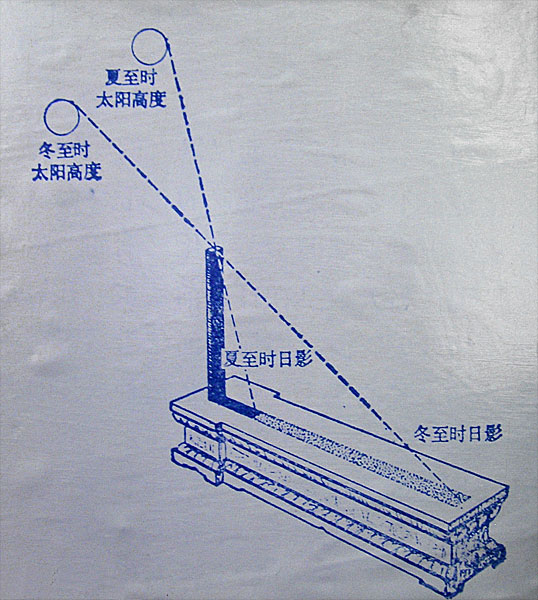 |
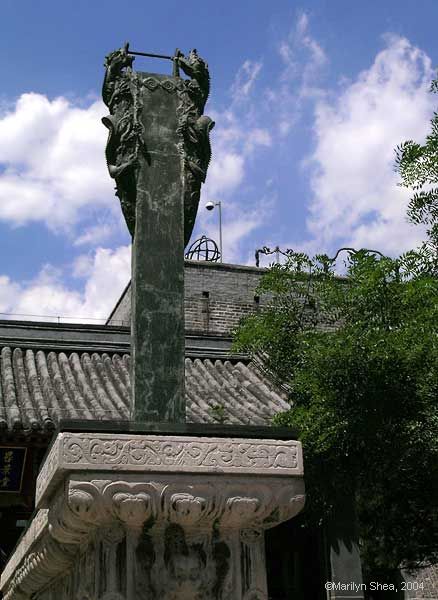 |
| The gnomon is used to measure the angle of the sun, determine the seasons, and is the basis of the sundial. Guo Shoujing improved the measurements made with the gnomon by redesigning it to increase accuracy. More complete descriptions and additional pictures of the gnomon and the instruments shown below on this page will be found in the descriptions of the instruments at the Beijing Observatory in later pages. |
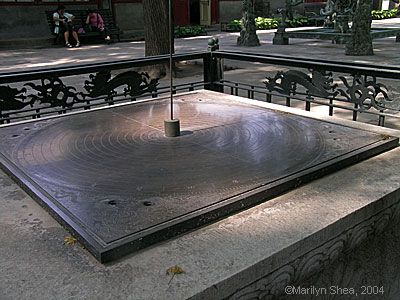 |
| This is a replica of Guo Shoujing's square table located in the courtyard of the Beijing Ancient Observatory. |
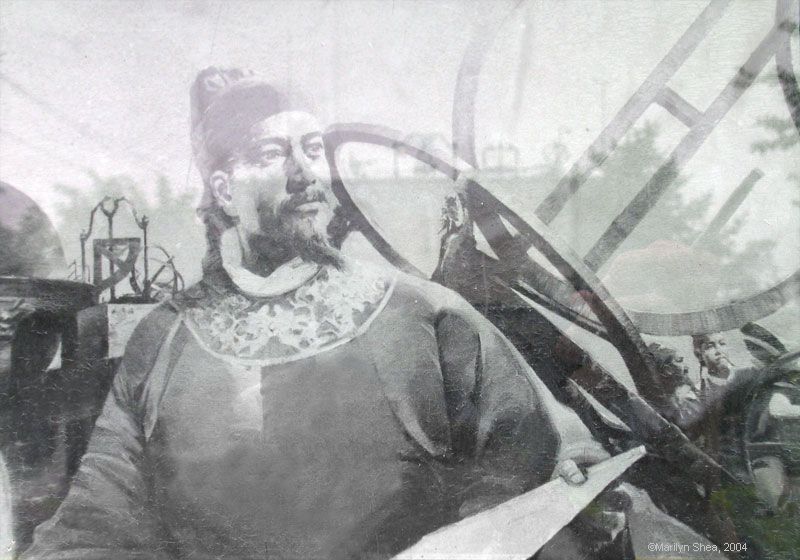 |
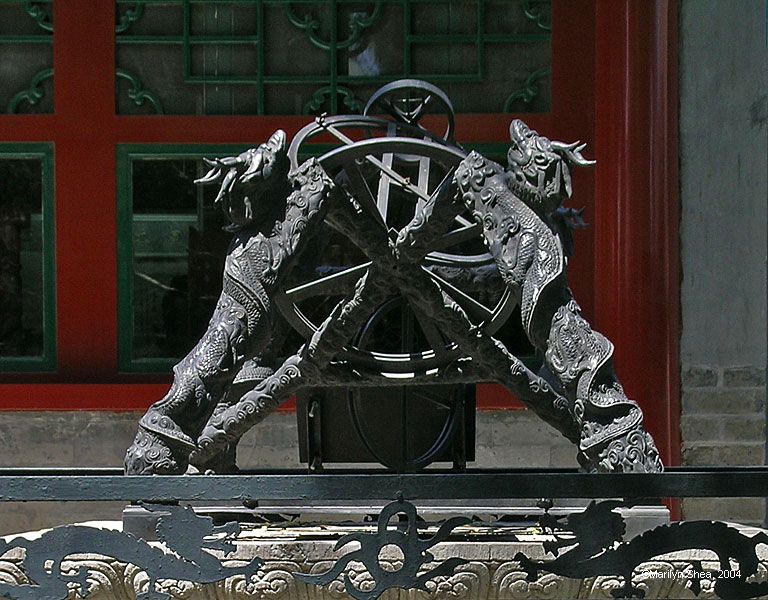 |
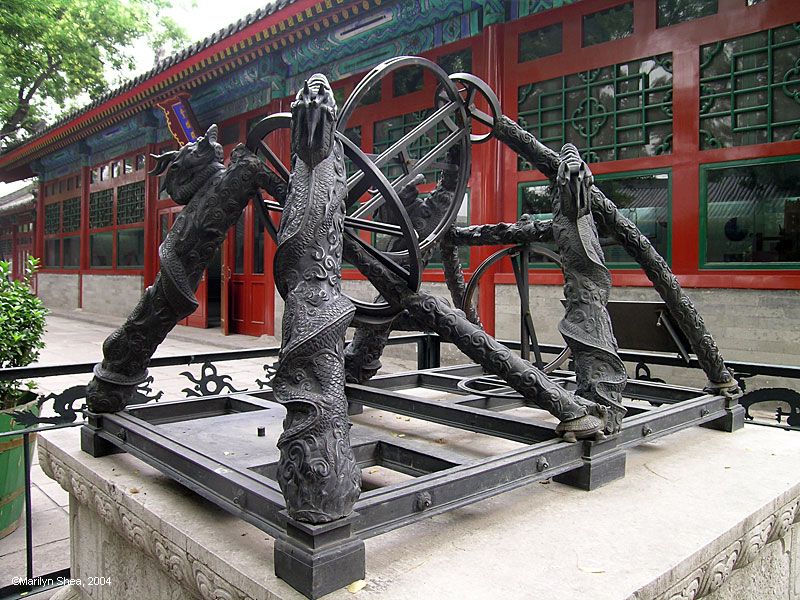 |
| The abridged armillary sphere shown in the above two pictures is a scaled model of one designed and built by Guo Shoujing during the Yuan Dynasty. It is located in the main courtyard of the Beijing Ancient Observatory. The original was moved to Nanjing for safety. |
 |
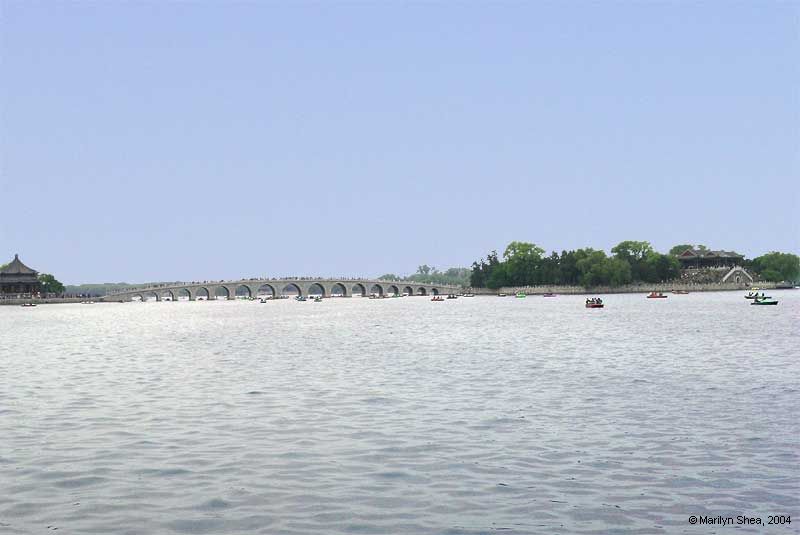 |
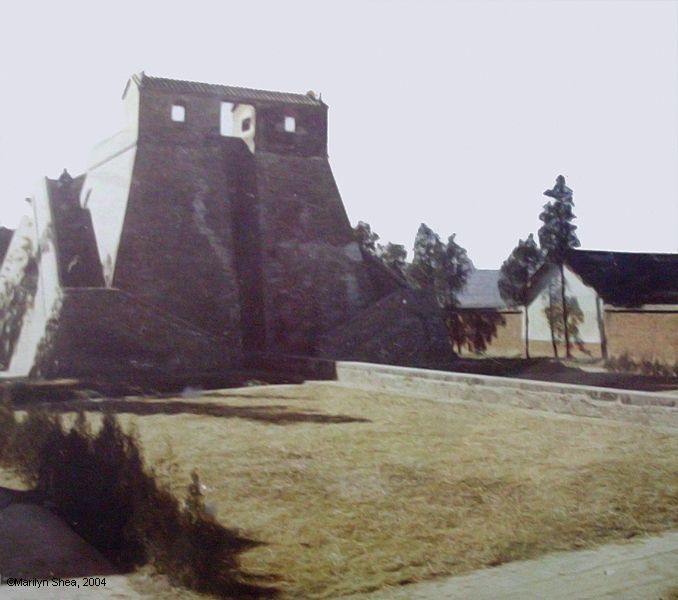 |
| Guo Shoujing designed the Gaocheng Observatory at Dengfeng in present day Henan Province in 1276, at the beginning of the Yuan Dynasty. The building is 9.46 m high and a 31.9-m-long stone measurement path called a shigui stretches out in front of the building and is used to measure the sun's shadow. Access to the top is by an external stairway. Construction of stable towers for observation entailed building a small mountain of dirt and stone and then facing it with stone. That is what makes the sides slanted. The sheer size of the observatory lets astronomers make much more accurate observations than does the smaller gnomon shown above.
The site had been used for observatories since the Zhou Dynasty. In fact, Yi Xing constructed one of his gnomon at the site when collecting data for his Da Yan calendar. Having observations made in the same place over centuries allowed astronomers to compare celestial data over time and map changes in the heavens. |
http://hua.umf.maine.edu/China/beijing2.html
Last
update: May 2007
© Marilyn Shea, 2007